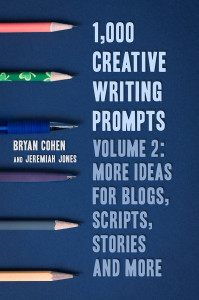Elizabeth Spann Craig's Blog, page 145
December 3, 2013
Listing Our Accomplishments
By Elizabeth S. Craig, @elizabethscraig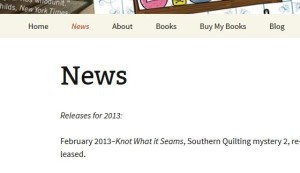
Writer Lynda R. Young wrote a great post for the Insecure Writers Support Group: 4 Reasons to Celebrate Your Writing Milestones. In it, she talks about the benefits of thinking back on past accomplishments.
I love looking back on past achievements. That’s because my to-do list is frequently so scary that it gives me a sense of security to see what I’ve finished. I read once that to-do lists help us be more productive if we keep the crossed-off items on our list instead of making new lists all the time. I can see why—it’s motivating to see how far we’ve come, no matter if the project is writing and promoting a book or cleaning out a garage.
This is particularly important, I think, during this time of year. That’s because it’s resolution time.
I’ve gotten so that I’d rather make to-do lists for my year and plop the tasks on my calendar than come up with a list of resolutions that might be lost or forgotten. Even then, the list seems unmanageable sometimes. I knew, for instance, at this time last year that I’d have at least four books release in 2013 (if I didn’t, I’d be paying back some advance money). I also knew I’d promised readers to put my self-published books in print. In addition, I wanted to explore going into audiobooks. Plus, I knew that my blog—which had issues ever since Blogger had pushed through a major update—needed to migrate to WordPress. It was a lot to do.
But—I crossed all those tasks off my list this year. And instead of relentlessly moving forward to the next item, I slowed it all down a bit. I stuck most of my accomplishments up on my website’s News page. My news page is always a bit sad, anyway, since I don’t really do readings or signings anymore. What’s more, these accomplishments help alert readers that I’ve got print books and audiobooks available for sale now.
Even if you don’t do something as public as a website list, you might want to keep a note somewhere that you can look at when you get overwhelmed by what’s ahead. You could keep it in a Word doc or your calendar, on Evernote or on a sticky note. These could be tasks as big as finishing a first draft, or smaller, important tasks like finding a cover designer or formatter, researching agents, reviewing self-publishing options, or learning social media and how to effectively promote.
Do you track your accomplishments? Celebrate your milestones? What did you accomplish in 2013?
Addendum–I should also mention that I had a book release yesterday! (Not sure where my brain is with promo lately.)
Quilt Trip
, a Penguin NAL book, is now available. 
December 1, 2013
How to Make Your Entire Home an Office
When my wife and I moved into our latest apartment a few years ago, we made sure to get a place with a second bedroom. I planned to use that room as an office for my freelance and personal writing. My success rate for finishing my writing has never been 100 percent in any room anywhere, but that office tops the list efficiency-wise. As important as it is to have a dedicated writing space, I wrote my first few books in a variety of places. Wherever I wrote was my office that day, whether it was the kitchen table or the bedroom. When I feel stuck on my writing in a certain location, I’m happy to move to the next room to see if it can get me past my temporary writer’s block.
Here are a few writing locations you may not have thought of.
1. The Kitchen
I’m fortunate that my kitchen counter comes up to the perfect height for me to stand and write. Whether I’m writing by hand, using my laptop or typing on my Neo 2 electronic keyboard, the act of standing helps to get the blood flowing to my brain. When I pushed myself to the limit with a 2,500 word goal per day (in addition to my 2,000 words or so per day of freelance writing), I would find myself getting too tired or anxious to write. Standing up seemed to help that problem for at least a few hundred words.
2. The Garage
I like to think of my wife’s car like a tiny writing pod. I’ll sit in the backseat, move the front passenger seat as far ahead as it can go and relax into my personal writing area. I don’t turn the car on or anything. I simply sink into the comfortable seat and write. This location was always great for scribbling out a blog post by hand when I simply couldn’t look at a screen any longer that day.
If your garage is off limits because of odor or clutter, this is a good excuse to brainstorm your next book while taking out a few garbage bags worth of junk.
3. The Laundry Room
Our apartment complex has a joint laundry room in the basement of the next building over. I love bringing down a portable work desk with me and hammering out a few hundred words while my laundry tumbles. There’s something about doing two things at once that heightens my sense of accomplishment. “I worked on a book and I finally cleaned those sheets? I’m a rock star!”
I’ve also heard stories of multiple authors who wrote their books in their laundry rooms. Maybe the smell of dryer sheets has something to do with creative productivity.
4. The Bedroom
Now, before you tell me that writing on your bed will put you right to sleep, I have to say that I agree with you. Writing while sitting or lying on your bed is a recipe for disaster if you’re at the beginning of a writing session. If you only have 200 words left as part of your daily goal, however, the comfortable and relaxing accommodations of your bedroom may be able to loosen you up enough to complete them. You know how good ideas always come to you right when you’re about to go to bed? There’s no reason you shouldn’t harness this power during the tail end of your writing sessions. Make sure to set an alarm in case you actually do hit the hay.
5. The Porch
I live in Chicago, which could mean my porch is off-limits about eight freezing months out of the year. At least, it would mean that if I wasn’t crazy. Sometimes, you just need a little oxygen to stir the brain. If that means sitting outside when it’s 20 degrees outside in all of your coats and gloves that are thin enough to let you type, you do it. Maybe not for more than 20 minutes at a time, but it’s a perfectly viable thing to do for a crazy person a.k.a. writer.
I fully recommend a thermal top and bottom if you plan to brave the cold and your writing at the same time.
–
A daily writing routine is one of the keys to becoming a better writer. If you have a hard time meeting your daily goals and you have to stay around the home, you should pull out all the stops to reach those goals. If you feel blocked, test out one of these five primo locations to get you out of your writing funk. You are the renter or owner of your entire home. You might as well use the whole thing to create your next piece of work.
About the Author
 In honor of his new book, Cohen is hosting the “1,000 Prompts, 1,000 Dollars” Writing Contest on his website. Click the link to find out how to enter!
In honor of his new book, Cohen is hosting the “1,000 Prompts, 1,000 Dollars” Writing Contest on his website. Click the link to find out how to enter!
Bryan Cohen is an author, a creativity coach and an actor. His new book, 1,000 Creative Writing Prompts, Volume 2: More Ideas for Blogs, Scripts, Stories and More is now available on Amazon in digital and paperback format. His other books include 1,000 Creative Writing Prompts, The Post-College Guide to Happiness, and Ted Saves the World. He has published over 30 books, which have sold more than 20,000 copies in total. Connect with him on his website, Build Creative Writing Ideas, on Facebook or on Twitter.
November 30, 2013
Twitterific
By Elizabeth S. Craig, @elizabethscraig
Twitterific links are fed into the Writer’s Knowledge Base search engine (developed by writer and software engineer Mike Fleming) which has over 23,000 free articles on writing related topics. It’s the search engine for writers.
Are you an unpublished Crime Novelist? Enter the Emerging Writers Getaway Contest of the Whidbey Writers MFA Alumni Association. Grand prize: $300 and 5-day residency at Northwest Institute of Literary Arts MFA program (tuition and lodging only). Final judge New York Times bestselling author Robert Dugoni. Comments on top three entries by Laurie McLean of Foreword Literary Inc. Submissions open Feb 14-May 23, 2014. Entry fee $25. Proceeds benefit Whidbey MFA Alumni Association programs and scholarship fund. http://www.whidbeymfaalumni.org/?page_id=1154
Kobo exec @mtamblyn on the impossible task of curating 4 million titles & what should scare authors: http://dld.bz/ddsPz
6 Tips for Writing With a Chronic Illness: http://dld.bz/cUFtD @jessbaverstock
A Man Writing Female Characters: http://dld.bz/cUFtE @JonSprunk
All the links I shared last week: http://dld.bz/cUGrJ . All the links I’ve ever shared (searchable): writerskb.com
Top Five Highs and Lows of Publishing: http://dld.bz/cUFtv @mpax1
Thoughts on beginning a novel: http://dld.bz/cUFtq @sharonksouza
5 Tips for Trying to Write When the Kids Are Home: http://dld.bz/cUGsk @WeBlogBetter
15 Common Places That Can Inspire Your Creativity: http://dld.bz/cUGsn @TheWallenWay
10 Mistakes Authors Make That Can Cost Them a Fortune (and how to avoid them): http://dld.bz/cUGsx @bookgal
On Becoming a Professional Amateur: Character Acrobatics: http://dld.bz/cUGsz @bookviewcafe
You Know You’re a Writer If…: http://dld.bz/cUGuS @sara_sans_h
Book cover archive: http://dld.bz/cUGuW @raquelbyrnes
9 Odd Stories Behind Book-Inspired Music: http://dld.bz/cUGve @kimber_regator
Poetry Profiles: Copper Canyon Press: http://dld.bz/cUGvj @nytimesarts
Freelance Editor Rates To Guide Your Work: http://dld.bz/cUGvn @galleycat
The top 3 rules of social media for authors: http://dld.bz/cUGvv @chrisrobley @bookbaby
The Effective Use of Flashbacks: http://dld.bz/cUGv8 @marygkeeley
The Highly Underrated Gravatar – Why You Need One and How to Get It: http://dld.bz/cUGv9 @writerplatform
How to Work Faster in Microsoft Word With Hidden Features: http://dld.bz/cUGvX @kingbobsley
How To Sell Books With Amazon Reviews: http://dld.bz/cUGwk @selfpubreview @cattosko
How To Summon Creative Presence: http://dld.bz/cUFt8 @OrnaRoss
Ellipses Use: http://dld.bz/cUKm5 @EditorJamieC
Tips for surviving revisions: http://dld.bz/cUKnz @AlexJCavanaugh
10 Writers Who Couldn’t Get Published Today: http://dld.bz/cVuXT
7 Time Management Hacks: http://dld.bz/cVuXZ @thebookwright
Adverb abuse: http://dld.bz/cVQMv @EditorJamieC
All about perma-free and ranking at Amazon: http://dld.bz/cVQQ4
Nonfiction writing–find your readers before writing the book: http://dld.bz/cVQQC @GLeeBurgett
Rewarding our readers—freebies for our mailing list: http://dld.bz/cVQQM @ladyanakina
Avoiding social media overwhelm: http://dld.bz/cVQQW @uriel1998
How to Find (and Compile) Proofreading Errors on a Kindle: http://dld.bz/cVQRj @byondpapr
Marketing with promo cards: http://dld.bz/cVQSm @WTDiscover
14 Ways to Tick off a Writer: http://dld.bz/cVQSv @rebeccamakkai @pshares
5 things 1 writer wishes he’d known before going indie: http://dld.bz/cVQSH
How Writers and Bloggers Can Use the Rule of 5 To Become Discoverable: http://dld.bz/cVQSS @ninaamir
Pluck Great Advice from Abundant Information by Experimenting: http://dld.bz/cVQSZ @LeslieLSanders
Should you self-publish or not? http://dld.bz/cVQUj @kristeneperron
Forget the Finish Line, Enjoy the Publishing Process: http://dld.bz/cVTpw @DIYWriting
Sudden immersion as part of a writing process: http://dld.bz/cVYqM @RichardLSutton
A Lesson About Leaving Negative Reviews: http://dld.bz/cWa8q @davastewart
Alternatives to GoodReads: Riffle, LibraryThing & BookLikes: http://dld.bz/cWdmY @CaballoFrances
How To Design and Crowd Test your Kindle Cover: http://dld.bz/cWdu6 @EBindery
Getting Book Reviews: The Methods Award-Winning Authors Use: http://dld.bz/cWduA @jimhbs
Freebie Strategies for Indie Authors: http://dld.bz/cWduU @sabsky
5 Steps to Blogging Mastery for Fiction Writers: http://dld.bz/cRdQ2 @writerplatform
Rafflecopter – An Easy Tool for Author Giveaways and Launch Parties: http://dld.bz/cWdvp @BiblioCrunch
Simple Solutions to 10 Common Writing Roadblocks: http://dld.bz/cQBYn @LeslieLSanders
47+ Places to Submit Your Free KDP Select Promotion for Your Kindle eBook: http://dld.bz/cWdww @trainingauthors
Ebook Marketing: Boxed Sets are Gaining Exposure and Sales: http://dld.bz/cWdw9 @jimhbs
Not About The Money: 10 Other Indie Author Motivations: http://dld.bz/cWdwF @EBindery
Best Unkept Book Marketing Secret of the Indie Author: http://dld.bz/cWdyw @JenniferDiaries
If fragmented is how we read now, then how should we write? http://dld.bz/cWdy6 @byondpapr
Mavens, Reviewers, Readers and Buyers: http://dld.bz/cWdyC @bookbuzzr
Manage Your Author Marketing Platform with 4 Easy Steps: http://dld.bz/cWdyF @CaballoFrances
Cover Art for Self-Publishers: http://dld.bz/cWdyP @LeslieLSanders
Emotional Barriers in Fiction: Intro to Emotional Channels: http://dld.bz/cY5TS @NakedEditor
Snark is a Dead Scene: Why It’s Time For Writers to Try Something New: http://dld.bz/cY5Ua @jaceycockrobin
Focused on Fiction: Five Storytelling Tips: http://dld.bz/cY5V5 @postaday
Are you a writer or an author? http://dld.bz/cY5V7 @ladyanakina
The Myth of Daily Word Count: http://dld.bz/cY5V9 @cerebralgrump
The most powerful marketing for a storyteller are the stories themselves: http://dld.bz/cY5VW @storyrally
Are Travel Writers Obsolete? http://dld.bz/cY5Wh @TravelandEscape
10 Tips to Staying Focused When Writing a Novel: http://dld.bz/cY5Wu
Workspace Porn: The ground they walk on: http://dld.bz/cY5W3 @MFAVN
4 Reasons Authors Should Embrace Their Writing Mistakes: http://dld.bz/cY5W7 @vgrefer
6 Keys for a Writing Retreat: http://dld.bz/cY5Yh @SandraMartini
4 Reasons to Write the Hell Out of (What’s Left of) 2013: http://dld.bz/cY5Ym @pshares @goldenthis
9 Ways Writers Can Use Pinterest: http://dld.bz/cY5Yq @pronounced_ing
Why the Writing of Breaking Bad is So Good: http://dld.bz/cY6bJ @GreenLensMedia
Why Writers Should Practice Short Fiction: http://dld.bz/cY6kN @TheIndieChicks
Are There Books Too Private to Publish? http://dld.bz/cY6kU @bookriot
3 Things You Should NOT Do with Your NaNoWriMo Novel: http://dld.bz/cY6md @changeitupedit
Famous Novelists on Symbolism in Their Work: http://dld.bz/cY6mh @neatorama
Turning the Cogs: Content Farming: http://dld.bz/cY6mt @WritersEdit
15 good reasons why we shouldn’t write for a living: http://dld.bz/cY6mz @colin_falconer
Make your blurbs count: http://dld.bz/cY6m4 @GiveMeYourTeeth
Why 1 writer is grateful that her novels failed: http://dld.bz/cY6mE @NinaBadzin
Yes, being a good writer still matters: http://dld.bz/cY6mT @bizjournalism
Tips for a better author bio: http://dld.bz/ddtAq @janefriedman @writerunboxed
Best Practices for Getting Published: http://dld.bz/ddtAr @ajfinnegan
How to choose a writing style: Social validation, creative expression, or both? (Personality test for writers): http://dld.bz/ddtAw
Brand Yourself: How would you sum up your life in just 6 words? http://dld.bz/ddtHs @FirebrandTalent
What one writer learned from carving teeth: http://dld.bz/ddtH4 @KMWeiland
Publishing industry faces serious challenges, but is hardly ‘spiraling down the drain’: http://dld.bz/cVaRc @Porter_Anderson @MikeShatzkin
Great Scene: “Shakespeare In Love”: http://dld.bz/cUPPx @gointothestory
50 Synonyms for Control: http://dld.bz/cUPPt @writing_tips
Why autobiography is cursed by an unreliable narrator: http://dld.bz/cUPPU @guardianbooks
1 writer’s list of writing mistakes: http://dld.bz/cUPRJ
10 great meals in literature: http://dld.bz/cUPRX @TelegraphBooks
Can’t Take a Research Trip? No Problem: http://dld.bz/cUPSz @carrieturansky
4 Ways to Reveal Your Character’s Personal Boogie Man: http://dld.bz/cUPTg @niniehammon
Top 10 Clever Google Search Tricks: http://dld.bz/cUPTH @WhitsonGordon
Basic Instinct: http://dld.bz/cUPTX @bang2write
Track Changes is your friend: http://dld.bz/cUPUc @EditorJamieC
Writing When You’re Tired: http://dld.bz/cUPU5 @jamesscottbell
10 Promotion Pitfalls to Avoid: http://dld.bz/cUPU7
Build Your Own Bestseller: 3 Formulas: http://dld.bz/cUPPN @noreenmalone
8 Rules For Writing in Bed: http://dld.bz/cUPUF @writersdigest
POV Issues in a Romance Opening: http://dld.bz/cUPUA @janice_hardy
November 24, 2013
Keeping a Professional Distance From our Book
By Elizabeth S. Craig, @elizabethscraig
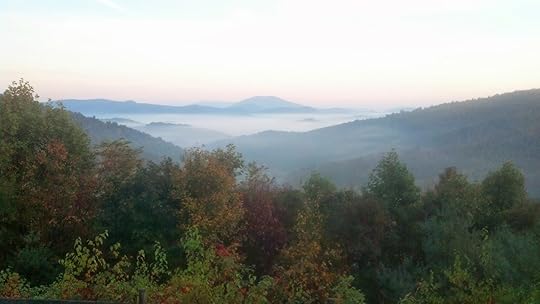
I’ve been thinking a lot lately about
gaining distance from our books. I
really feel that’s vital to both editing them effectively, gaining a critical
perspective of them, and learning from negative feedback.
One way to gain distance from our books
is to write another book. The authors I
know who wrote one book (and were traditionally published), fell into this
“only child syndrome” with their book…they helicopter-parented it and were
genuinely hurt over poor reviews. Hurt
to the point where they were immobilized and couldn’t move forward with writing
again.
Another way to cultivate this distance is
to adopt the most businesslike attitude we can about our books. Because, if
we’re sticking with publishing as a career…it is
a business. I think that’s where writers
got off-track so many times in the past.
We didn’t understand our contracts, we didn’t understand the nature of
the industry, we didn’t understand our responsibility to our book…which is to
promote ourselves as a brand and work on the next story.
As a business, there’s a research and
development angle. Knowing what
resonates with our readers and what they dislike about our books helps us to
improve the stories and secure our readers’ loyalty to a series. I’ve gotten positive and negative feedback on
all my books and keep track of it on very basic spreadsheets. I think studying the reviews/feedback this
way helps us maintain distance from the work…otherwise, reading our reviews can
be extraordinarily painful. But getting
something positive out of a negative review can help make my next book better.
I get emails and Facebook messages from
readers. I read each book’s highlights
on the book’s product page (the text that readers highlight or comment on with
their Kindle device). I sometimes
venture onto Goodreads—although you really do
have to be strong there because reviews can be particularly vicious on that
site.
What readers like helps me, too. They
frequently have suggestions about plot developments they’d like to see happen
in future books. I’d be crazy not to
listen to these, but it does reach a point where I realize only I know what’s
best for my stories. I’m not writing my
own fan fiction, here. But I can see
trends, if many readers are interested in certain plot points. Relationship arcs, story arcs…whatever piques
reader interest the most. And it
frequently does influence my writing.
There definitely seems a shift to me in publishing toward a sort of
crowdsourcing of ideas in writing. Sites
like Wattpad, where authors release
stories chapter by chapter and readers give feedback are influencing this
trend, too.
If you go this route, I’d collect this
information over a period of time and probably not on days where we’ve just had
a rotten writing day or are feeling insecure about our ability. One thing does help—keeping a Word doc with
copy/pasted positive feedback or reviews or emails. This can really help, especially if you’re
dealing with a crop of bad reviews (sometimes they go in cycles).
How do you keep a professional distance
from your book?
And…Happy Thanksgiving to my American
friends. I’m going to take the remainder
of the week off from blogging to celebrate the holiday—and be Doctor Mom to my
teenager who is getting his wisdom teeth out. :) I’ll be back again on Sunday with
Twitterific.
November 23, 2013
Twitterific
By Elizabeth S. Craig, @elizabethscraig
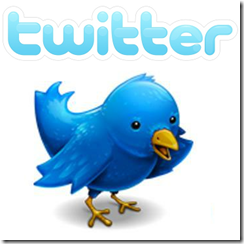
Twitterific links are fed into the Writer’s Knowledge Base search engine (developed by writer and software engineer Mike Fleming)
which has over 23,000 free articles on writing related topics. It's the search
engine for writers.
Friend and fellow
mystery writer Margot
Kinberg has compiled a crime fiction anthology: In
a Word--Murder. The ebook retails
for $2.99 and proceeds from its sales benefit Princess
Alice Hospice, in memory of Maxine Clarke, a supporter of and good friend
to the crime writing community. One of
my stories is in the collection, too...my first attempt at short fiction.
:)
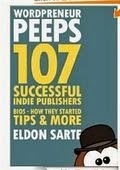
I'm also included in
a newly-launched resource for self-publishing authors:
Wordpreneur
Peeps: 107 Successful Indie Publishers.
Eldon Sarte from the Wordpreneur
blog has collected advice from 107 self-published authors and compiled them in
this attractively-priced November
release (currently at $.99). His blog is also a helpful resource for
independent authors.
Have a great week!
7 Tips to Help you
Write More: http://dld.bz/cUmdu @RinelleGrey
3 Steps to Get Past Creative Speed Bumps:
http://dld.bz/cUmdx @emilywenstrom
4 Ways For Authors To Reach The Right
Audience For Their Book: http://dld.bz/cTqVD
@ebooksandkids
Crime fiction--finding ties between
seemingly unrelated cases: http://dld.bz/cUuWG
@mkinberg
Marketing Your Independently-Published
Novel: http://dld.bz/cUvds @juliemusil
Self-Publishing and Pricing: Rewarding
Loyal Readers vs. Luring New Ones: http://dld.bz/cUvrt
@CamilleLaGuire
Challenging Assumptions: Pricing
Frontlist Like Backlist and Backlist Like Frontlist: http://dld.bz/cUwYx
The Tension Between Startups and Trad.
Publishers: http://dld.bz/cUzBc
@Porter_Anderson @arthurattwell @MikeShatzkin
Examining PI/Police relations in crime
fiction: http://dld.bz/cU4CF @mkinberg
Keeping a Cozy Series Moving: http://dld.bz/cU4TT @ElaineOrr55 @authorterryo
Characterization 101: Anti-Heroes: http://dld.bz/cU84c @DefyingBlog @JulieMusil
“The Trap (for Many) of Self-Publishing”:
http://dld.bz/cU9et @DonMaass
@Porter_Anderson
Handling Continuity Markers Across
Chapter Transitions: http://dld.bz/cUmep
@JulietteWade
How to Use Mind Mapping in Writing
Memoir: http://dld.bz/cUmeG @Sherrey_Meyer
How to Create a Promotion Plan That Helps
Your Book Succeed: http://dld.bz/cUmeJ
@ninaamir
Writing and the Balancing Act: http://dld.bz/cUmeP
Freelancers--writing for free in a
strategic way: http://dld.bz/cUmeU
Writing A Scene That Works: http://dld.bz/cSM7R @woodwardkaren
Becoming a Freelance Editor: Corrections
and Egos: http://dld.bz/cUvuS @indie_jane
Creating a Protagonist Readers Will Love:
http://dld.bz/cUvvf @kristenlambtx
5 Reasons Authors Need to Use Social
Media for Book Marketing: http://dld.bz/cUvvy
@janvbear
Timeline: A Brief History of Publishing: http://dld.bz/cUvv5 @galleycat
The New, Old Way to Tell Stories: With
Input From the Audience: http://dld.bz/cUvvD
@lovelifelitgod @TheAtlantic
How To Write A Murder Mystery: http://dld.bz/cUvvN @susanspann @woodwardkaren
Write your character's passion: http://dld.bz/cUvvT @lindasclare
Planning a book--Scene-Level Planning: http://dld.bz/cUvvX @stdennard
How to Be Creative: It's All in the
Process (video): http://dld.bz/cUvwd @99u
@pbs
The 10 most dramatic deaths in fiction: http://dld.bz/cUxTG @TelegraphBooks
The figure of the chaotic champion--order
and chaos: http://dld.bz/cUxTK
@fantasy_faction
Horror in literature needn't be about
monsters: http://dld.bz/cUxTV @louise_wise
Why You Should Think Differently When
Formatting Your Next Ebook: http://dld.bz/cUxTY
@thewritelife
10 Tips for Writing Good Prose: http://dld.bz/cUxUk @Writers_Write
When is it Good to Self Publish? http://dld.bz/cUxUu @JordynRedwood
Screenwriting Advice, in Six Seconds or
Less: http://dld.bz/cUxU4
To "Self"-Publish, You Need a
Team: http://dld.bz/cUxUK @Bob_Mayer
Neil Gaiman: "I don't think there is
such a thing as a bad book for children http://dld.bz/cUzdj
@lucycoats
Screenwriters: Why Having Multiple
Projects Is Killing You and Your Career: http://dld.bz/cUzez
@indiewire
15 Tips From The Writers Of
"Adventure Time": http://dld.bz/cUzeJ
@andnowtothemoon @BuzzFeedGeeky
Question it All: Things to Ask in Any
Scene: http://dld.bz/cUzeV @janice_hardy
A common mistake for writers when trying
to focus on a task: http://dld.bz/cUzfh
@lifehackorg
Why Listening Must Come Before Writing: http://dld.bz/cUzfp @KeithFerrin @jeffgoins
Mixing Real People And Imaginary
Characters In Historical Novels: http://dld.bz/cUzft
@mwhiteauthor
Finding your writer's voice: http://dld.bz/cU23Z @Shirl_Corder
Remember You're Writing A Selling Script:
http://dld.bz/cU24d @raindance
What does branding mean to an author? http://dld.bz/cU24p @ventgalleries @
How Much Can Indie Authors Realistically
Make? http://dld.bz/cU24t @BadRedheadMedia
How to Pre-Plot a Series: http://dld.bz/cSWvM @plotwhisperer
How To Make Your Own Free Book Cover In
MS Word: http://dld.bz/cU24H @thecreativepenn
How To Fix A Plot That Feels Lightweight
Or Predictable: http://dld.bz/cU24U
@raindance
Emotional Elements of Plot: http://dld.bz/cU25a @scriptmag
How To Write A Murder Mystery: http://dld.bz/cU3rF @woodwardkaren
Why writers should use Google +...and how
to use it effectively: http://dld.bz/cU3rK
@annerallen @seowebdesignric
Interviewing Characters to Get to Know
Them: http://dld.bz/cU4Mq
Using Online Writing Workshops to
Skyrocket Your Creativity: http://dld.bz/cU4My
@livewritethrive @LesAnglesey
Crossing the (Invisible) Line Between
Poetry and Prose Poetry: http://dld.bz/cU4MH
Freelancers: Why Your Query Letter Gets
No Response: The Painful Truth: http://dld.bz/cU4MR
@ticewrites
Why agents say no to your project: http://dld.bz/cU4Nd @JanetKGrant
How to Write a Good Book in 30 Days: http://dld.bz/cU4Nm @ninaamir
5 Ways to Make Your Novel Inescapable: http://dld.bz/cU4Nv @victoriamixon
4 Key Book Publishing Paths: http://dld.bz/cU564 @janefriedman
Answers to writers' questions on Point of
View: http://dld.bz/cU56E @janice_hardy
An agent on re-querying after rejection: http://dld.bz/cU56N @Janet_Reid
Writing is Design: Eliminate 'That' Fat
From Your Writing: http://dld.bz/cU56Y
What Charlotte Brontë Taught 1 Writer: http://dld.bz/cU57z @BenisonAnne
7 Reasons You Should Write A Sports
Movie: http://dld.bz/cU57B @Bang2write
Dear Young Writer: http://dld.bz/cU57Z @susankayequinn
Business of Screenwriting: I Don't
Believe in Fate: http://dld.bz/cU58m
@scriptmag
4 Questions to Ask About Your Cozy
Mystery Character's Job: http://dld.bz/cU58s
@ChrystleFiedler
10 tips for better headlines: http://dld.bz/cU58G
Helpful books on revising: http://dld.bz/cU58W @Fictiffous
When to kill a character: http://dld.bz/cU58Z @lindasclare
Creating Perfect Solitude for Creative
Focus: http://dld.bz/cUCnB @99u
Saying goodbye to promo postcards: http://dld.bz/cUCrE @nicolamorgan
Reality doesn't have to make sense, but
fiction needs to: http://dld.bz/cUCrS
@janelebak
An essential question to keep asking your
character: http://dld.bz/cUCsb @LaurelGarver
Dos and Don'ts For Selling Your Book
Online: http://dld.bz/cUCsv @ZiggyKinsella
Not Ready for Publication? Not Even Ready
for Editing: http://dld.bz/cUCs3
@Porter_Anderson @tanyaegangibson
8 Habits of Highly Successful YA Authors:
http://dld.bz/cUCtK @theatlantic @nolanfeeney
7 Ways to Prevent Your Blog from Failing:
http://dld.bz/cUCtT @ninaamir
Claiming Your Book to Your Author Central
Page: http://dld.bz/cUCup
Avoiding the "Saggy Middle": http://dld.bz/cUCuD
Dos and Don'ts For Selling Your Book
Online: http://dld.bz/cUCsv @ZiggyKinsella
To "Self"-Publish, You Need a
Team: http://dld.bz/cUxUK @Bob_Mayer
When is it Good to Self Publish? http://dld.bz/cUxUu @JordynRedwood
3 Steps to Get Past Creative Speed Bumps:
http://dld.bz/cUmdx @emilywenstrom
The query letter: Your manuscript's most
important page: http://dld.bz/cUd7U
@darlawrites
Novel Middles: From Sag to Super: http://dld.bz/cUE3q @lindasclare
Academic writing--scholarship in the
fantastic: http://dld.bz/cUE5n
@amazingstories0
5 Ways To Share Your Book Research With
Your Readers: http://dld.bz/cUE9P
@thecreativepenn
5 tips for better fiction: http://dld.bz/cUE9U @lindasclare
The Ultimate Story Checklist: Iron Man: http://dld.bz/cUE9W @cockeyedcaravan
Tips for writing locked-room mysteries: http://dld.bz/cUEA5 @MarkCN
Why Your Book Pitch Matters (Even If
You're Self-Published): http://dld.bz/cTqVy
@JFBookman
Top 10 writing fallacies: http://dld.bz/cUFgk @States50
Use Camera Angles to Supercharge Your
Novel: http://dld.bz/cUFgn @livewritethrive
5 Ways To Share Your Book Research With
Your Readers: http://dld.bz/cUE9P
@thecreativepenn
Passive vs Active Heroes: http://dld.bz/cUFtb @AlexBledsoe
The Ultimate Guide to Evil Cats in SF/F: http://dld.bz/cUFth @io9 @Krellitlikeitis
Ray Bradbury's unknown universe of
realist fiction: http://dld.bz/cUFtk
@guardianbooks
Thoughts on beginning a novel: http://dld.bz/cUFtq @sharonksouza
The Writing Life: Re-entry and Changing
Gears: http://dld.bz/cUFts @DeborahJRoss
Top Five Highs and Lows of Publishing: http://dld.bz/cUFtv @mpax1
Preparing for a Productive Writing Day: http://dld.bz/cUFtz
Developing characters organically: http://dld.bz/cUFt4 @BrianYansky
How To Summon Creative Presence: http://dld.bz/cUFt8 @OrnaRoss
2 Steps to Connecting with your
Characters: http://dld.bz/cUFtA
@AnthonyEhlers
November 22, 2013
Preparing for a Productive Writing Day
By
Elizabeth S. Craig, @elizabethscraig

I’ve always been a big believer in being
prepared (yes, I was a Girl Scout all
those years ago). I don’t like hectic
mornings, so everything is organized the night before to make sure the mornings
go smoothly. My kids know that in the evenings
before bed, they have to have all their homework done, essays printed out, homework collected in
their backpacks downstairs, and have a
handle on what they want to wear the following day. Lunches are made the night before. The more time we invest at night, the better
and more stress-free our mornings are.
The Lifehack blog recently ran a post by
Timo Kiander: “Do
You Do This Common Mistake When You Start Working on Your Tasks?” In it, the
writer gives tips for people who open up a document, daily goals firmly
in mind, and then basically waste their writing time through lack of
preparation.
I’ve never wanted to mess around in the
mornings. I get up before five a.m. to
write, and I sure don’t want to waste that time…otherwise I might just as well
get more sleep.
At this point in my writing career, I’ve
got an outline to follow for each project.
But that’s only been in the last year or so and only out of total
necessity. Although I never fully
outlined with my previous books, I always
knew what I was going to write the next day.
That way I could hit the ground running in the morning. Get my coffee, open up my laptop, see my
little three sentence note to myself regarding what I wanted to write that day,
and knock out a good part of my goal. I
used mini-outlines to keep myself on track.
For me, a good mini-outline should be
very concise, but very explicit. I also
include a short summary of where I left off the day before. That way I don’t have to read what I wrote
the previous day (which always makes me want to edit). Then I’ve got an
extremely brief sentence or two that explains the point of the scene. If the scene doesn’t have a point that can be
summed up in about a sentence…that’s just not a great scene. Our whole book should have enough of a point that we can
sum it up in a sentence.
I also get into a writing mode by
thinking about the story before I even make it over to my laptop. So, as soon as I wake up (gosh, this sounds
compulsive, as I’m typing it down), I start thinking about where I left off and
where I want to go with the story today.
While I’m pulling on a robe and pouring the coffee, and letting the dog
out, I’m thinking about dialogue and plot points. By the time, minutes later, that I’m finally
opening my computer, I’ve got a very clear picture of where I’m going next.
What happens when you sit down to write
each day? How do you get into that
writing mode and keep your writing time productive?
Image: MorgueFile: cohdra
November 19, 2013
The Ability to Single-Task
By Elizabeth S. Craig, @elizabethscraig

The past few days haven’t been terrific
and the fault for this lies squarely with me.
So…I dropped my phone in water. Apparently, this is not a good thing to do to
smart phones. Not only did I drop it in
water, I didn’t even realize I’d dropped
it into water. There was no quick
rescue, so the phone was submerged for quite a while. Once I discovered it, I tried sticking it
into a bag of quick-rice, but boy, that thing was dead.
I have also broken a plastic container
that was full of leftovers (yes, this is
hard to do! But somehow…), chipped a bowl, ran into a doorjamb, and burned two
things I was cooking. Even for me, this
is a long list of issues.
The interesting thing is that after my
phone was destroyed (it was actually the last in the series of unfortunate
events), I immediately stopped having these calamities. I’m not going to blame my phone 100%, but it apparently
was a significant contributing factor.
A mom-oriented blog that I frequently
read recently warned
against the hazards of distracted living
in a post by a mother whose child could have drowned in a tub while she
was distracted…the kind of cautionary tale to strike fear in a parent’s heart.
I do multi-task some things very
well. If one of the things is completely
mindless…ordinarily housework of some kind or exercise…then I can do it and
write the next scene of my book in my head or plan a blog post or do any other
thoughtful task.
But if something requires
attention—whether it’s a conversation with someone or measuring ingredients for
supper—then I should just focus 100% on what I’m doing. Plus, it’s just really starting to stress me
out to do too much at one time. I get a sort of a frantic feeling.
Not only that, I’ve noticed a distinct
problem with single-tasking. I’ve gotten so capable at multi-tasking, that
my single-tasking abilities have taken a nosedive.
The phone’s accessibility and bright,
shiny icons mean that I check email and social media more than I intend
to. And, when I check them, I’m usually
doing something else at the same time.
What also feeds into this is a general
restlessness that I have. It’s also present when I write.
My top tip for combatting restlessness
for writing time is to:
1)
Either close all the windows I have open, turn off email/Twitter/Facebook/other
notifications, unplug the modem, or go somewhere with no WiFi (increasingly
hard to do)
2)
Then set a timer for myself for writing.
Either use Online Stopwatch
or I’ll Google “set timer for ___minutes” and let Google count it down.
3) Get done what I need to get done in
the space before that restlessness strikes –for me, that will usually be about
twenty minutes— and then do something else for twenty minutes…ordinarily for
me, that’s going to be something active (if, obviously, I haven’t left the
house to write).
4) Then write for another twenty minutes,
especially if I’m on deadline. Repeat
until I hit whatever my goal is.
Now I just need to apply that approach to
the rest of my day and I should be golden. :)
I get more done when I’m single-tasking, I feel less-stressed, and
whatever I’m focusing on is better-completed.
This is, for those of you who want to
adapt it for yourself, basically the Pomodoro
technique and I’ve been using it off and on since I heard about it. Michael Hyatt explained it well in
this post: How
to Use Batching to Become More Productive.
It works well for me for task-completion.
When I single-task, I get more done,
faster. When I get more done, I have more time to stare into space and
brainstorm and form ideas. I always know
I haven’t had enough quiet time in my day when I start getting tons of ideas
right before I fall asleep…it’s sometimes the only moment of the day when I’m
not juggling several things at once.
How is your multi-tasking? How does it affect your writing, if it
does? If you multi-task well, how well
can you single-task?
Image: MorgueFile: Seemann
November 17, 2013
Developing Characters—Getting Started
By Elizabeth S. Craig, @elizabethscraig

My daughter has been horseback riding on
the weekends for years now. I love that she loves it, I love the way she excels
at it. I love that it’s an outdoor
activity in a digital, indoor age. The
barns are interesting places and the people who hang out in barns are very
different from the people I’m ordinarily around, so that’s very
stimulating. And, of course, the horses
are gorgeous.
But I really just didn’t get the whole horse thing. My daughter would talk about the horses while
we were at the barn and continue talking about them during the week. There was lots of personification going
on...in my mind, anyway. “Dusty worries
about the jumps when they’re in different locations than usual. That’s why he kept trying to look at them as
we were cantering around the ring. I had to really make sure he was looking
straight ahead,” she’d say. And I’d nod
and ask more about Dusty’s proclivities and his outlook on the world, and
think, “What a creative child I have!”
Because I’d look at Dusty, the largest horse in the barn, and all I got
out of it was… “My Lord, what a massive animal that is.” And hope she always stayed on the horse.
I’m perfectly capable of telling people
what’s on my dog’s mind and my cats’ minds, but I couldn’t get into the horses’
heads at all. Until my daughter started
riding Sweet Pea a month or so ago. That
was when I started getting into horses.
Sweet Pea was curious. My daughter would be trying to tack her up
and the horse would hear someone coming and crane her head to peer around and
see who was there with this intelligent, interested, curious look on her
face. She attentively watches the pasture, when she has a view to it, to
spy on her horse buddies. Actually, I
guess Sweet Pea is more nosy than
curious.
With characters, we’re doing the same
thing. We’re trying to find some way for
readers to connect with them. How can we
bring them to life, especially if they only have a minor role in a book
(protagonists, hopefully, we’ve got nailed).
How do we keep our book’s characters from becoming just another horse in
the stable?
I like to start out simple and then build
from there…maybe even in the edits if I don’t have the character
fully-developed as I’m writing him.
Having something small to build around…like Sweet Pea’s nosiness…is helpful
when you’re starting out on a new book.
At this point and after over a dozen
books, I look for ways to keep characters and plots fresh. I know writers who’ve written upwards of
sixty or eighty books and I marvel at their ability to keep their books from getting
stale or exploring the same types of characters or subject matter. Sometimes when I’m brainstorming, it’s almost
as though my brain is trying to follow on the same course…I’ll immediately come
up with something I’ve done before (even if it’s a few books ago) and dig
deeper.
Sometimes, I need a prompt. Get me started with a direction that’s
different from the well-worn track I’m trying to steer down again. At that point, going to a site like the Inspiration for Writers site,
can help to just jumpstart your own process.
There are lists
of character traits there that can just help get your imagination in
gear. The site Read, Write, Think , a resource for
teachers, also has a
nice sample list.
Sometimes I’ll go on sites like Pinterest…and be careful there, because that place is a major time-suck. Set a
timer. But you can see so many pictures
of different types of people there that it can help break you out of any
particular pattern that your brain is bent on repeating. People's appearances
in the pictures suggest different types of personalities.
My standby is ‘collecting people’ out in
public. Just being at the library gives
you the opportunity to see many different types of people—and attitude and
personality tends to show itself easily, even to casual observers (especially
after you do this kind of collecting through the years).
Most of us have written amalgams of
different people we know—family, friends, co-workers, acquaintances. After a while, though, unless we get out and
meet more people, we’ll have run through
all the folks we know. At least…I have.
:) I didn’t know that many people, even
starting out. But making amalgams can be helpful for a while.
You can also twist it around and build a
character from what they want most.
Because sometimes, what someone wants most suggests certain traits about
them. If what someone wants most is
money, for instance…it's easy to dream up particular traits for them. What if it’s respect, power, love,
friendship, shelter, faith?
What if you dump a bunch of
challenges/problems on some of these characters? How they react to that and deal with it will
indicate some of their traits…traits that can also be shown in other parts of
their life and relationships with others in the story.
So…lots of different ways of doing
this. And this is just getting us
started…the next drafts we can add to the skeleton first draft and fill them
out even more. The whole point is just
to make the characters stand out from each other to readers and make it more
likely that readers will foster connections with them and relate to them and
just plain get them like I finally got
Sweet Pea.
How do you set your characters apart from
each other and provide them with unique traits and personalities?
November 16, 2013
Twitterific
By Elizabeth S. Craig, @elizabethscraig

Twitterific links are fed into the Writer’s Knowledge Base search engine (developed by writer and software engineer Mike Fleming)
which has over 23,000 free articles on writing related topics. It's the search
engine for writers.
Check out the new
resource for writers. It’s Alex J. Cavanaugh’s Insecure
Writer’s Support Group website. There you’ll find pages of links to
resources—writing tips, publishers, agents, queries, self-publishing,
marketing, contests, and publications for writers.
Friend and fellow
mystery writer Margot
Kinberg has put together a crime fiction anthology: In
a Word--Murder. The ebook retails
for $2.99 and proceeds from its sales benefit Princess
Alice Hospice, in memory of Maxine Clarke, a supporter of and good friend
to the crime writing community. One of
my stories is in the collection, too...my first attempt at short fiction.
:)
Have a great week!
6 Tools That Stop
Computer Distractions and Help You Stay on Task: http://dld.bz/cTK5m
@Trekity
How we present ourselves plays into our
brand: http://dld.bz/cTK55 @fictorians
Why Getting Some Negative Reviews Can Be
Positive: http://dld.bz/cTK58 @jodyhedlund
Romantic, Thinker, Skeptic: Using
Personality Types to Flesh out Your Character: http://dld.bz/cTK5D
Power Up Your Prose With Poetic Devices: http://dld.bz/cTK5R @martinaaboone
It's better not to imagine ourselves as
successful: http://dld.bz/cTK5W @sharww
How Not to Fire an Agent: http://dld.bz/cTDhN @byDougRich @scriptmag
3 tricks to sharpen your proofreading
eye: http://dld.bz/cT9tw @LaurelGarver
NaNoWriMo Dialogues: "I Think I Suck
And I'm Not A Real Writer" {lang}: http://dld.bz/cTK6j
@chuckwendig
Becoming prolific: http://dld.bz/cTKKa @onewildword
Rejections have nothing to do with your
merits as a novelist: http://dld.bz/cTKKT
@Lisa_Alber @DebutanteBall
5 Reasons A Good Writing Group Can Save
You: http://dld.bz/cTKMk @79SemiFinalist
7 Practices of the Prolific and
Prosperous Writer: http://dld.bz/cTKMq
@Wordstrumpet
Reality check for new writers: http://dld.bz/cTKMA @kristinerusch
At some point you've got to be a writer: http://dld.bz/cTKMT @KenLevine
Small Press, Traditional, and
Self-Publishing: Let's Stop Judging: http://dld.bz/cTKMY
@KateBrauning
On Letter Writing as Genre: http://dld.bz/cTKNk @publisherswkly
10 tips for screenwriters: http://dld.bz/cTKNp @AdelScreenWri
5 things 1 debut writer has learned about
the business: http://dld.bz/cTKNr
@msheatherwebb @DebutanteBall
7 Years of NaNoWriMo...7 Lessons: http://dld.bz/cTMxt @herebemagic
If You Wrote Well Once You Will Write
Well Again: http://dld.bz/cTMxu
@WriterlyTweets @JenniferLesher
How to be a writer--exercises in misery: http://dld.bz/cTMxw @matthaig1
8 writers should ask themselves: http://dld.bz/cTMxB @rgay @awpwriter
Is Privacy for Writers a Thing of the
Past? http://dld.bz/cTMxW @rachellegardner
Teachers on stretching gifted student
writers: http://dld.bz/cTMyj @tara_smith5
PD James' top 10 tips for writing a
novel: http://dld.bz/cTRvs
Think You Know Social Media for Writers?
Here's What You're Missing: http://dld.bz/cTRvx
@losapala
How-to for Submitting your Book to NOOK
Press: http://dld.bz/cTRv4 @bibliocrunch
How To Use Your Day Job To Get Freelance
Writing Gigs: http://dld.bz/cTRv6
@LFormichelli
Ranking Books by Their Total Number of
Amazon Stars: http://dld.bz/cTRv8
@johannthors
Resources for Mystery/Suspense Writers: http://dld.bz/cTRvF @EditorJamieC
@RamonaRichards
Creating Your Story Bible–Getting Your
Characters into S.H.A.P.E: http://dld.bz/cTRvH
@kayedacus
Brainstorming your story--what to plan
out in advance: http://dld.bz/cTRvN @JamiGold
Let the Characters Tell the Story: http://dld.bz/cTRvQ @JodieRennerEd
7 Ways to Finish Difficult Writing
Projects: http://dld.bz/cTRvT @workawesome
Crafting Lively and Believable Dialogue: http://dld.bz/cSrtw @writeabook
How Not to Be a Writer: 15 Signs You're
Doing It Wrong: http://dld.bz/cTRws
@KMWeiland
How To Brainstorm New Writing Ideas: http://dld.bz/cTRwv
6 reasons a workshop jolts your writing: http://dld.bz/cSrtp @thewritermag
Setting the Scene in Your Story Bible: http://dld.bz/cTXxs @kayedacus
Pacing Tip: Contrast in Plot: http://dld.bz/cTXx3 @ava_jae
Killing the Sacred Cows of Publishing:
Selling to a Big Publisher Insures Quality: http://dld.bz/cTXxC
@deanwesleysmith
Overwhelmed by Advice? http://dld.bz/cTXxP @LynnHobbsAuthor
@SouthrnWritrMag
5 Dead Giveaways that your Cover is an
Amateur Job: http://dld.bz/cTXyb @patinagle
Screenwriting Advice, in Six Seconds or
Less: http://dld.bz/cTXyk @rachsyme
@NewYorker
Publishing's Leap of Faith: http://dld.bz/cTXyA @pubperspectives
How Book Covers Have to Evolve in the
Digital Age: http://dld.bz/cTXyN @Goodereader
The Hierarchy of Needs: http://dld.bz/cTYQZ @SPressfield
How to Find Clarity & Confidence as a
Writer: http://dld.bz/cTYRb @jeffgoins
Willpower--5 ways to overcome decision
fatigue: http://dld.bz/cTYRg @james_clear
Indie books--100% DIY? http://dld.bz/cTYSB @amazingstories0
Watch out for predatory publishers: http://dld.bz/cTYSJ @AwfullyBigBlog
Should you quit your job to write full
time? http://dld.bz/cTYUK @writersdigest
The Decline and Fall of the Book Cover: http://dld.bz/cTYUP @newyorker
Advice and best practices for writers
gleaned from a Writer's Digest con: http://dld.bz/cTYVe
@Wiseink
Are You Writing in the POV You Think
You're Writing In? http://dld.bz/cTYWz
@MarcyKennedy
The Index Card Method and Story Structure
Grid: http://dld.bz/cTYW4 @AlexSokoloff
Why You Should Use Symbolism In Your
Writing: http://dld.bz/cTYXT @write_practice
How to use Pinterest to Promote Your
Book: http://dld.bz/cTZjp @JFBookman
10 Exceptionally Well-Written Horror
Films: http://dld.bz/cTZj2 @chris_shultz81
Dark days: The fascinating history of the
dystopian novel: http://dld.bz/cTZjG
@InkTanked
Own Your Business As You Own Your Book: http://dld.bz/cTZjK @susanspann
Writing Guidelines? Pick Your Own! http://dld.bz/cTZjR @volewriter @womenwriters
When Funny Just Won't Come: http://dld.bz/cTZkb @wordsxo @writerunboxed
An agent advises that author sites should
be active and posts or updates shouldn't be sloppy: http://dld.bz/cTZkr @Janet_Reid
Designing Your Own Book Cover from
Scratch: http://dld.bz/cTZku @wiseink
What new technology means for
storytelling: http://dld.bz/cTZs6&
@nytimesbooks
How To Create A Story With An Interesting
Hero & A Satisfying Ending: http://dld.bz/cUc6F @woodwardkaren
2 Quick Character Tips to Improve Your
Writing: http://dld.bz/cUc6P @jeanoram
How Not to Spam: http://dld.bz/cUc6R @annerallen
3 Query Don'ts: http://dld.bz/cUc7b @jemifraser
The Good And Bad In Chaotic eBook
Pricing: http://dld.bz/cUc8T @techdirt
How to Avoid the Self-Published Look: http://dld.bz/cUc9y @PaulaatAME
Looking for a place to send your 1st
attempt at a screenplay? Perfect your craft first: http://dld.bz/cUc9E
@Bambookiller
The Self-publishing Conversation is
Changing: http://dld.bz/cUc9V @thefuturebook
@agnieszkasshoes
What Font Should You Use In Your
Self-Published Book? http://dld.bz/cUcAa
Does self-publishing need awards,
gatekeepers, and vetting? http://dld.bz/cTZrR @IndieAuthorALLI @agnieszkasshoes
@Porter_Anderson
For plot inspiration--a story game for
crime fiction writers: http://dld.bz/cTZGR
@camillelaguire
A conference to help business-savvy
authors & small pubs connect and network: http://dld.bz/cUhQJ
@PubSmartCon @katmeis @Porter_Anderson
The theme of loyalty in crime fiction: http://dld.bz/cUkMS @mkinberg
9 Ways To Write Great Characters: http://dld.bz/cUdrD @Bang2write
Story Checklist: http://dld.bz/cUdrF @shalvatzis
Writing an inside-out novel: http://dld.bz/cUdrU @kathytemean
Why email newsletters still work — and
how you can make yours better: http://dld.bz/cUd7K
@sheinbaum
The query letter: Your manuscript's most
important page: http://dld.bz/cUd7U
@darlawrites
Urban Fantasy versus Paranormal Romance: http://dld.bz/cUd7Z @MarshaAMoore
Freelance writers: Why you May Not Want
to be FaceBook Friends With Clients: http://dld.bz/cUd8q
@Jenpens2
5 Nobel Prize Acceptance Speeches From
Some Literary Giants: http://dld.bz/cUd8w
@CassandraNeace
Books Don't Want to Be Free How
publishing escaped the cruel fate of other culture industries: http://dld.bz/cUd8E @tnr
Handling the To-Do List: Daily
Organization: http://dld.bz/cUd8U
In Defense of the Amateur Review: http://dld.bz/cUd9g @heidenkind
Doublet and Triplet Adjectives: http://dld.bz/cUd9m
Creating 'sliding doors' for our
characters: http://dld.bz/cUgmW @pshares
Choosing a title for a nonfiction book: http://dld.bz/cUgne @ogiogas
Tips for effective cover copy: http://dld.bz/cUgnp and different cover copy
styles: http://dld.bz/cUgnq @sarahannjuckes
Why does creativity seem to come and go? http://dld.bz/cUgn6 @tannerc
4 steps for writing emotion effectively: http://dld.bz/cUgnE @ava_jae
99 Ways to Market Your Art: http://dld.bz/cUgpq @LeRegalla
5 Quick and Easy Ways to Generate
Nonfiction eBook Ideas: http://dld.bz/cUgpF
@ninaamir
A Short Story from the Slush to the
Cover: http://dld.bz/cUgpR @diymfa
How to Enjoy Marketing Your Fiction (Even
If You Hate Selling): http://dld.bz/cUkYK
@storyrally
2 Quick Character Tips to Improve Your
Writing: http://dld.bz/cUc6P @jeanoram
Is comfort inherently problematic for
fiction? http://dld.bz/cUmcJ @jdiddyesquire
Dealing with our critical inner voice: http://dld.bz/cUmcN @DouglasEby
Can Fonts Make or Break Your Author
Branding? http://dld.bz/cUmcS @JFBookman
Free Promotional Tools For Authors: http://dld.bz/cUmcV @loriculwell
Pros and cons of outlining: http://dld.bz/cUmdb @randysusanmeyer
How Novelists Can Create Image Systems
for their Story: http://dld.bz/cUmdm
@livewritethrive
November 14, 2013
Writing to a Theme
By
Elizabeth S. Craig, @elizabethscraig
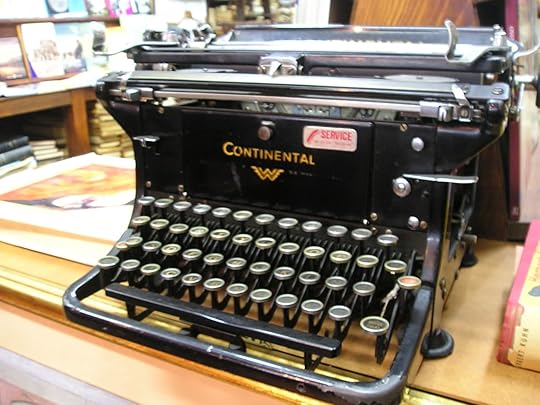
A few years ago, I got an email from a
middle school student. What was the
theme of my book?
At first I was just a little startled
that students just wrote authors about this kind of thing. It would never have occurred to me to do
that…but then, I guess the internet wasn’t around at that point, either (at least,
not to the general public).
And then
I was startled when I realized that…hey, the book in question didn’t really
have much of a theme. Maybe that’s why
the kid was having such a hard time. :)
I mean, you could go with a ‘good will triumph over evil’ type of
thing. It was basically general crime
fiction.
Now my Myrtle Clover series does have a regular theme throughout all the
books and aside from any other thematic elements in each separate book. Don’t discount the elderly. If you do, Myrtle might be walloping you
with her cane. Or revealing you as the
book’s murderer.
After that moment and that email, I
started paying a bit more attention to theme in my books. For one thing…heaven forbid I have another
student asking me about it. :) For another…it
was fun incorporating it in a subtle way.
I do think that subtle is key with
themes. Hitting a reader over the head
with a theme is almost like author intrusion.
I’ve made interesting discoveries along
the way in my efforts to add this literary element to my books. Let’s take my current project…the one that
I’ve felt I was behind on since it started a couple of months ago. The one where the teaser was due before the
outline. (Ugh.) Now the book has, believe it or not, a cover
and back cover copy. And I’m not done
with the book yet, although I plan to be basically done in the next 3
weeks…it’s due January 1.
My editor, after reviewing my outline,
included some special requests in her feedback.
In particular, she wanted me to incorporate some subplots involving some
recurring supporting characters that she felt readers were especially fond of.
So I brainstormed updates, conflicts in
their lives, growth, some ways that their issues might also intersect with the
main plot and the protagonist’s own arc.
And I’m wondering if, with theme, it’s
just that the author tends to have something on the brain and it starts coming
out in various ways in a book.
For me, it was the question of whether
people can change…really change. What
chance do we have to really change our personality, our habits, and our
tendencies for the better? This is a fun
theme to explore because change is such an important element in every
story. Every time the protagonist or
secondary characters can grow or change in some way, it’s going to add to the
story.
So I approached change in a lot of
different ways in the book. I have
characters question whether the victim in the book had really changed his
stripes before he was murdered (as he swore he had). I have a character who
fears change and struggles as she tries to adapt to a new relationship. I’ve got a character who feels as if she should change, although she’s comfortable with
herself the way she is. What are the reactions of characters to other
characters’ changes…do they recognize them for what they are? Are they threatened by them? Are they disbelieving that change can be
genuine and successful?
Obviously, writing to a theme is more
effective if the theme is integrated into the main plot and impacts the
protagonist, too.
Have you ever used exploration of theme
as story development or character development?
How did it go?

